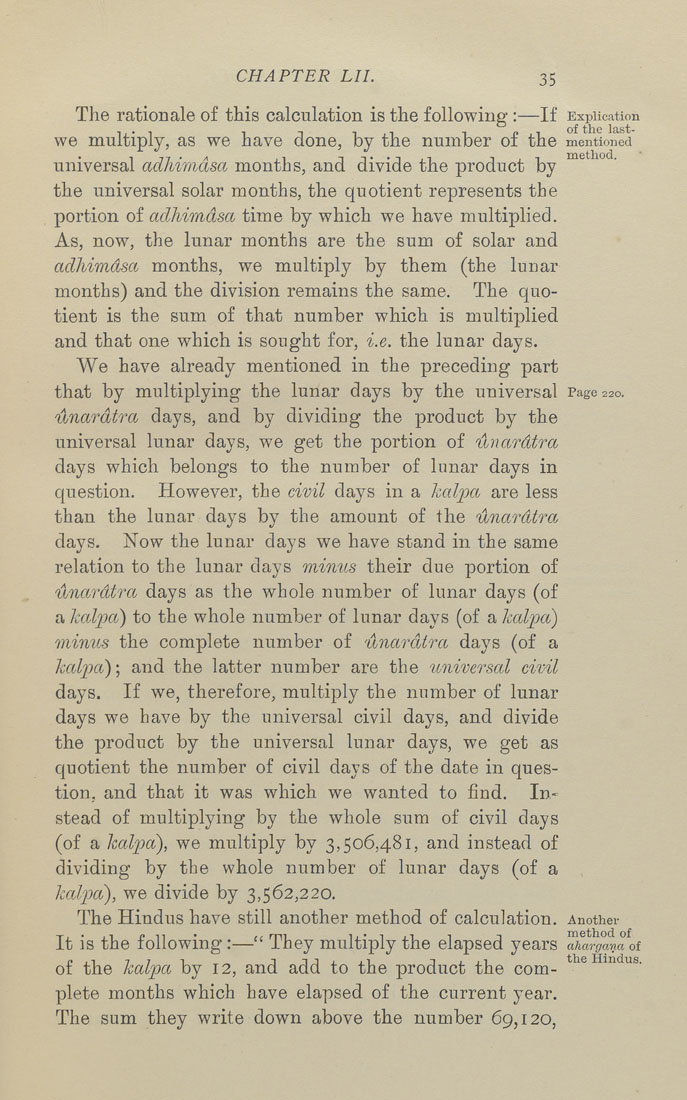CHAPTER LIT 35
The rationale of this calculation is the following:—If Explication
we multiply, as we have done, by the number of the mentioned
universal adhimdsa months, and divide the product by
the universal solar months, the quotient represents the
portion of adhimdsa time by which we have multiplied.
As, now, the lunar months are the sum of solar and
adhimdsa months, we multiply by them (the lunar
months) and the division remains the same. The quo¬
tient is the sum of that number which is multiplied
and that one which is sought for, i.e. the lunar days.
We have already mentioned in the preceding part
that by multiplying the lunar days by the universal Page 220.
Unardtra days, and by dividing the product by the
universal lunar days, we get the portion of unardtra
days which belongs to the number of lunar days in
question. However, the civil days in a kalpa are less
than the lunar days by the amount of the Unardtra
days. Now the lunar days we have stand in the same
relation to the lunar days minus their due portion of
unardtra days as the whole number of lunar days (of
a kalpa) to the whole number of lunar days (of a kalpa)
minus the complete number of unctrdira days (of a
kalpa)', and the latter number are the universal civil
days. If we, therefore, multiply the number of lunar
days we have by the universal civil days, and divide
the product by the universal lunar days, we get as
quotient the number of civil days of the date in ques¬
tion, and that it was which we wanted to find. In-
stead of multiplying by the whole sum of civil days
(of a kalpa), we multiply by 3,506,481, and instead of
dividing by the whole number of lunar days (of a
kalpa), we divide by 3,562,220.
The Hindus have still another method of calculation. Another
It is the following:—" They multiply the elapsed years ahargana ot
of the kalpa by 12, and add to the product the com¬
plete months which have elapsed of the current year.
The sum they write down above the number 69,120,
|








